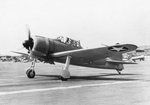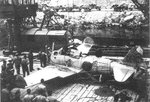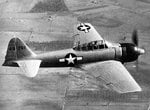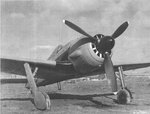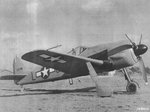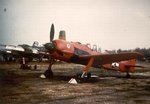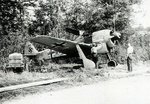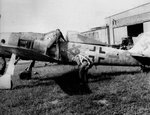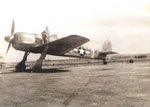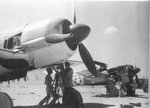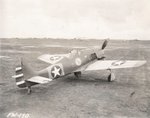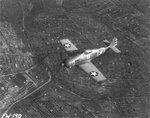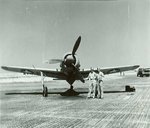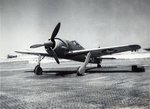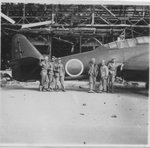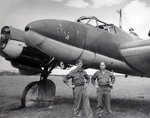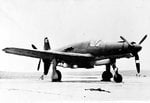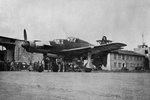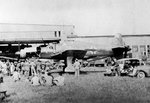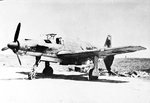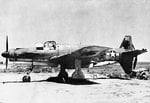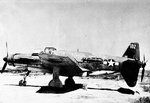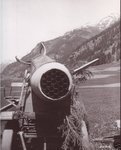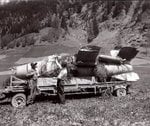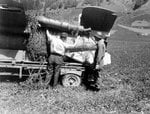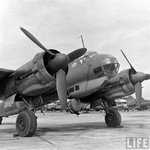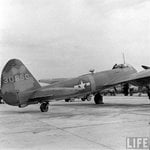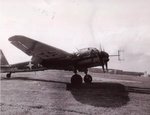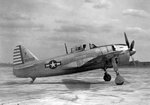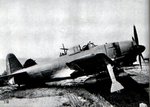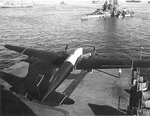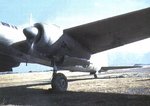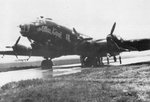Messerschmitt Me-262 Schwalbe
After the end of the war, the Me 262 and other advanced German technologies were quickly swept up by the Americans (as part of the USAAF's Operation Lusty), British, and Soviets. Many Me 262s were found in readily-repairable condition and were confiscated. Both the Soviets and Americans desired the technology to serve as a basis for their own jet fighters. During testing, the Me 262 was found to have advantages over the early models of the Gloster Meteor. It was faster, had better cockpit visibility to the sides and rear (mostly due to the canopy frame and the discoloration caused by the plastics used in the Meteor's construction), and was a superior gun platform, as the early Meteors had a tendency to snake at high speed and exhibited "weak" aileron response.The Me 262 did have a shorter combat range than the Meteor.
The USAAF compared the P-80 Shooting Star and Me 262 concluding, "Despite a difference in gross weight of nearly 2,000 lb (900 kg), the Me 262 was superior to the P-80 in acceleration, speed and approximately the same in climb performance. The Me 262 apparently has a higher critical Mach number, from a drag standpoint, than any current Army Air Force fighter." The Army Air Force also tested an example of the Me 262A-1a/U3 (US flight evaluation serial FE-4012), an unarmed photo reconnaissance version, which was fitted with a fighter nose and given an overall smooth finish. It was used for performance comparisons against the P-80. During testing between May and August 1946, the aircraft completed eight flights, lasting four hours and 40 minutes. Testing was discontinued after four engine changes were required during the course of the tests, culminating in two single-engine landings. These aircraft were extensively studied, aiding development of early U.S. and Soviet jet fighters. The F-86, designed by engineer Edgar Schmued, used a slat design based on the Me 262's.
After the end of the war, the Me 262 and other advanced German technologies were quickly swept up by the Americans (as part of the USAAF's Operation Lusty), British, and Soviets. Many Me 262s were found in readily-repairable condition and were confiscated. Both the Soviets and Americans desired the technology to serve as a basis for their own jet fighters. During testing, the Me 262 was found to have advantages over the early models of the Gloster Meteor. It was faster, had better cockpit visibility to the sides and rear (mostly due to the canopy frame and the discoloration caused by the plastics used in the Meteor's construction), and was a superior gun platform, as the early Meteors had a tendency to snake at high speed and exhibited "weak" aileron response.The Me 262 did have a shorter combat range than the Meteor.
The USAAF compared the P-80 Shooting Star and Me 262 concluding, "Despite a difference in gross weight of nearly 2,000 lb (900 kg), the Me 262 was superior to the P-80 in acceleration, speed and approximately the same in climb performance. The Me 262 apparently has a higher critical Mach number, from a drag standpoint, than any current Army Air Force fighter." The Army Air Force also tested an example of the Me 262A-1a/U3 (US flight evaluation serial FE-4012), an unarmed photo reconnaissance version, which was fitted with a fighter nose and given an overall smooth finish. It was used for performance comparisons against the P-80. During testing between May and August 1946, the aircraft completed eight flights, lasting four hours and 40 minutes. Testing was discontinued after four engine changes were required during the course of the tests, culminating in two single-engine landings. These aircraft were extensively studied, aiding development of early U.S. and Soviet jet fighters. The F-86, designed by engineer Edgar Schmued, used a slat design based on the Me 262's.
Attachments
-
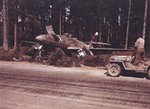 ME-262.jpg123.2 KB · Views: 820
ME-262.jpg123.2 KB · Views: 820 -
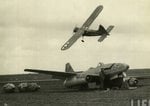 s.jpg68.5 KB · Views: 836
s.jpg68.5 KB · Views: 836 -
 Messerschmitt Me-262 (EEUU) 002.jpg101.9 KB · Views: 1,689
Messerschmitt Me-262 (EEUU) 002.jpg101.9 KB · Views: 1,689 -
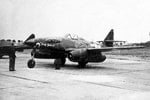 Messerschmitt Me-262 (EEUU) 003.jpg99.7 KB · Views: 748
Messerschmitt Me-262 (EEUU) 003.jpg99.7 KB · Views: 748 -
 Messerschmitt Me-262 (EEUU) 004.jpg87.4 KB · Views: 1,405
Messerschmitt Me-262 (EEUU) 004.jpg87.4 KB · Views: 1,405 -
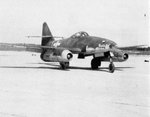 Messerschmitt Me-262 (EEUU) 005.jpg83.4 KB · Views: 729
Messerschmitt Me-262 (EEUU) 005.jpg83.4 KB · Views: 729 -
 Messerschmitt Me-262 (EEUU) 006.jpg90.5 KB · Views: 706
Messerschmitt Me-262 (EEUU) 006.jpg90.5 KB · Views: 706 -
 Messerschmitt Me-262 (EEUU) 007.jpg68.2 KB · Views: 1,545
Messerschmitt Me-262 (EEUU) 007.jpg68.2 KB · Views: 1,545 -
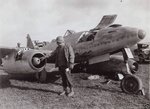 me262.jpg122.8 KB · Views: 859
me262.jpg122.8 KB · Views: 859 -
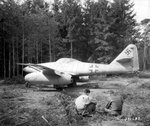 me262 002.jpg157.1 KB · Views: 2,607
me262 002.jpg157.1 KB · Views: 2,607 -
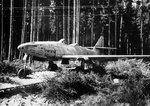 Messerschmitt Me-262 (EEUU) 0015.jpg184.8 KB · Views: 831
Messerschmitt Me-262 (EEUU) 0015.jpg184.8 KB · Views: 831 -
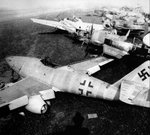 Messerschmitt Me-262 (EEUU) 0016.jpg167.9 KB · Views: 1,390
Messerschmitt Me-262 (EEUU) 0016.jpg167.9 KB · Views: 1,390 -
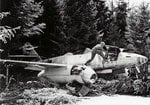 Messerschmitt Me-262 (EEUU) 0017.jpg155.4 KB · Views: 645
Messerschmitt Me-262 (EEUU) 0017.jpg155.4 KB · Views: 645 -
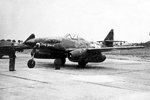 Messerschmitt Me-262 (EEUU) 0018.jpg93 KB · Views: 563
Messerschmitt Me-262 (EEUU) 0018.jpg93 KB · Views: 563
Last edited:

